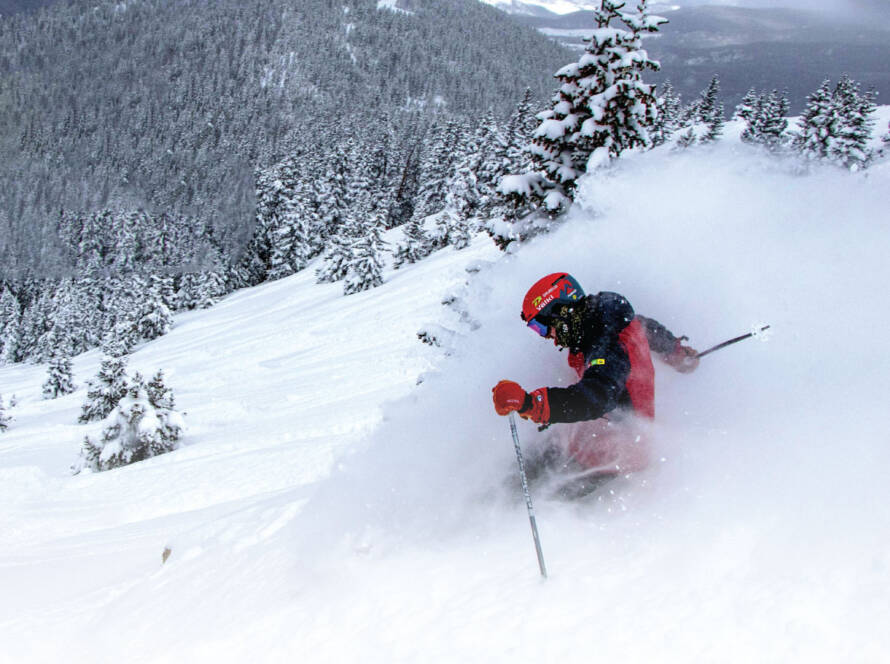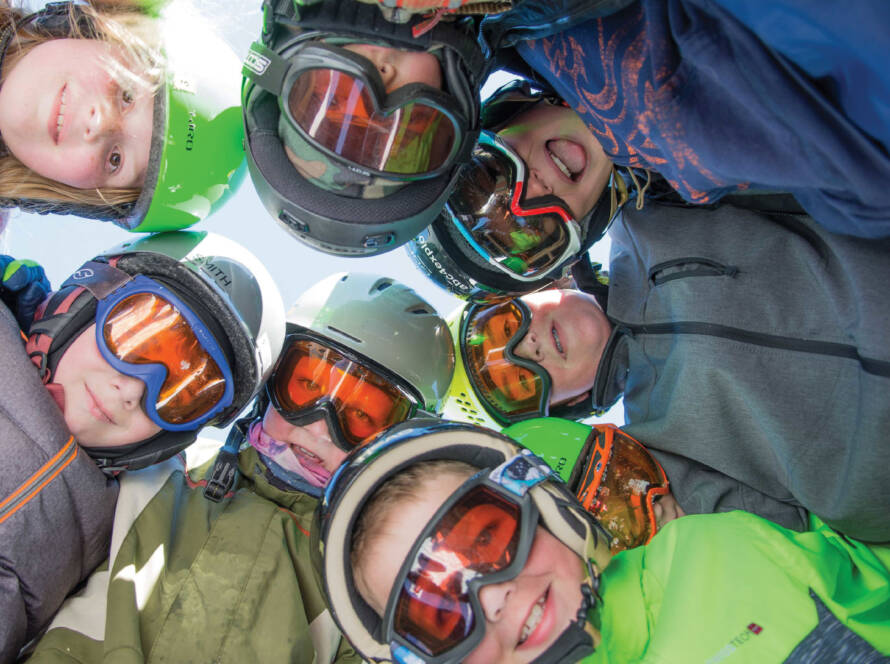Looking to increase revenue potential year-round, ski resorts are turning to innovative solutions to attract customers during the summer months.
Rather than shutting down when the snow disappears, many resorts are offering summer activities, as well as permanent attractions in the hopes of becoming popular recreation destinations all year long.
Mountain biking may be a summer activity for resorts that many people think of first, but the range of off-season attractions these days is actually quite diverse. Offerings include aerial adventure courses, zip lines, mountain coasters, water parks, bungee trampolines, gyroscope rides and mini-golf.
Earl Saline is the director of education programming for the National Ski Areas Association (NSAA). He sees more and more resorts adopting a four-season model because it just makes good business sense.
“Essentially, you’re putting your assets to work and finding ways to generate revenue all year. This gives you a chance for greater utilization across your business,” he said. “Having revenue come in 12 months out of the year gives you more resources to grow and improve your operation and continue investing back into the resort.”
Saline says adding summer offerings can also boost the bottom line by enticing new and different guests in addition to existing ski resort customers to come during the off-season. “To be competitive, you want to stay front of mind with the people who already come to your area,” he said.
Thaddeus Shrader, CEO of adventure course provider Bonsai Design, maintains anything that causes more traffic to your site and more dollars to be spent there is a good thing. “In general, if you can diversify your offerings, you’re going to cause more of the public to notice you and you’ll be more relevant,” he said.
Another key benefit of the four-season model is that it enables resorts to keep more staff on throughout the year.
“Many ski resorts have to go hire staff every fall and train them all up, and then hope that some of them will return the next year,” said Shrader. By cutting down on the cost to recruiting and training new personnel, “you’ve lowered your operating expenses and all these other line items that have nothing to do with whether or not a summer program is working well.”
Saline agrees. “Certainly, staffing is an issue that the industry is facing, finding new blood to come in and then retaining those new employees,” he said. “If you can provide year-round work, you’re more likely to hold on to your good employees.”
Larry Hays is part of the sales team for Wiegand Sports, a leading manufacturer of alpine coasters. He says retaining your best employees has always been a key concern in the ski industry.
“You’re always going to have some seasonal people but I think your core group, you want to keep them there,” said Hays. “If they’re able to retain most of those employees, it creates a lot better stability for the resort.”
Floodgates open
In 2014, the United States Forest Service adopted policy guidelines to open opportunities for ski areas to promote to year-round recreation activities, as a way to encourage more people to enjoy the country’s natural forests as well as benefit local communities.
The guidelines, which help determine which summer recreation activities and associated facilities are allowed on ski resorts operating on national forests, apply to 122 ski areas on nearly 180,000 acres of public land administered by the Forest Service. The agency estimated in 2014 that expanding ski area recreation activities could mean an additional 600,000 visits to the national forests each summer.
It’s a move that’s provided tremendous benefits for the U.S. ski industry. “It expanded the number of areas that could offer summer activities of any significant level. It certainly opened the floodgates and provided opportunities that weren’t there before,” said Saline. “The number of areas offering summer activities is increasing and I would say in the past three years, that number has gone up even more.”
When it comes to new summer attractions being constructed at resorts right now, Saline lists aerial adventure courses, zip lines and alpine coasters as probably the top three. He adds that a lot of investment is also going into improving the mountain bike experience at resorts, led by companies like Gravity Logic, one of North America’s bike park developers.
Mountain biking
Mountain biking has been associated with ski areas for decades, but a more recent trend is the emergence of bike parks that cater to every kind of rider – not just those at the high end of the sport.
“The reality now is…if you operate a bike park, you have to have trails for all ability levels, and you have to have rental bikes and programs for people of all levels, but for beginners most importantly,” said Dave Kelly, director of Gravity Logic. “Really, the difference now is on introduction to the sport as well as catering to the high end, so I think all the operators understand that – if you don’t get new people into it, the market is just not going to be big enough.”
Saline says mountain biking is like skiing, in that it can act like an anchor sport that draws repeat visits from customers all season long.
“Is this an activity that you do once and you can scratch off your list, or is it something you’re going to come back and do again and again? I think that as a differentiator, mountain biking provides one of those ongoing actives that people are attracted to and will go back to an area to do again,” he said. “It’s a sport that, if you like it and really get into it, there’s a good chance you’re going invest in your own bike as your skills grow, and you’re going to continue to participate.”
Above ground adventures
Zip lining has become a major go-to attraction for resorts getting into or beefing up their offerings for the summer market. “Folks really like the idea of getting on a really long line and getting up above the tree line, going fast with the wind in their hair and feeling like flying. That’s one definite anchor,” said Shrader.
Saline agrees that zip lines are growing increasingly popular, largely because of their accessibility. If you are zip lining, he says, or riding on a mountain coaster for that matter, skill and fitness aren’t determining factors to how much fun you’ll have.
However, the hottest trend in summer attractions right now are aerial adventure parks, which incorporate such things like elevated platforms and pathways, rope bridges and swings, obstacle courses, climbing structures and jump towers.
“Adventure courses are gaining tremendous popularity to the point where they’re opening as stand-alone attractions in different parts of the country,” said Saline.
Shrader says aerial adventure courses can benefit resorts in both winter and summer. “You can run them year-round and if you don’t, you’re leaving money on the table,” he said. Gerhard Komenda, president of Tree-Mendous Aerial Adventures, says aerial adventure parks can be built to cater to various skill levels, just like a ski hill.
“We’ll have a hub or a big central platform, and from there we have five to 10 trails shooting out into the woods. Each one is different, and they’ll have different difficulty levels,” he said.
According to Shrader, a resort’s aerial attractions can include different activities, including zip lines, adventure courses and walking tours among the treetops. Having an assortment of offerings that require different time investments is good, he says, because not everybody is looking to stay several days at your resort.
“You want to attract those folks that are just pulling the interstate,” said Shrader. “[If] you have something that’s interesting and attractive for them to come in and do and buy lunch, then those ancillary purchases start to add up for the resort.”
Mountain coasters
Mountain coasters are becoming more popular, not just as summer add-ons but also as year-round attractions for ski areas. Typically, they can be operated during the winter months as well, providing another fun alternative for families staying at the resort.
Hays describes alpine coasters as a flagship attraction that are typically a huge draw in the summer. While they may operate at a reduced capacity at resorts during the winter months, he adds, the coasters are still generating essential revenue that will help offset the significant capital investment required to build them.
“We tell people typically you’re going to need to run a minimum of 60,000 to 100,000 people annually on the ride to really make money and pay for the investment. All of the rides that we have done in the U.S. have had a payback of anywhere between 18 and about 36 months,” said Hays.
Mountain coasters also normally do best in larger ski areas that already have an established summer market. “If you look at the locations where we’ve installed the coasters, most of those resorts are probably doing in excess of 200,000 to 300,000 skier visits a year and have an established summer business where they’re attracting 80,000 or 100,000 people to the resort or more,” said Hays. “Those are the ones that have been highly successful.”
Some resorts are investing in water parks as a way to boost year-round revenue, adding either outdoor facilities to attract visitors in the summer or indoor ones that have the potential to generate revenue all year, or even both.
Summertime attractions at resorts also include bungee trampolining, in which participants are harnessed to bungee ropes, and Euro Bungee, a variation of the sport that doesn’t require a trampoline. Other offerings include gyroscope rides, mazes and mini-golf courses. “There’s every type of amusement in the world out there right now,” said Kelly.
Density of experiences
For those resorts doing well in all four seasons, what’s the secret of their success? For many, it’s because they offer what Hays describes as “a density of experiences.”
“The resorts that have been very successful are the ones that, whether it’s Vail or Park City or Jiminy Peak, they have provided sort of the full gamut of things that people can do when they come to the resort. You can’t do this with just one or two things,” said Hays.
Komenda agrees. “If you don’t have a variety, you’re not going to draw people for a whole weekend,” he said. “One three-hour attraction isn’t going to cut it. You have to have a certain diversity.”
Saline says while larger ski resorts often lead the way in four season planning, “at the same time some of the smaller areas are doing different, innovative things…because they have limited resources.”
Examples include constructing adventure courses on a smaller scale but with new, creative features, he says, or building smaller bike parks that include such things like a pump track or dirt jump park within their area.
Fun for everyone
If you’re sensing that a common theme for all these summer attractions is family fun, you’re dead on. “Families are critical to the sustainability of the industry and to the sustainability of virtually any ski area, and that requires areas to be thoughtful about what’s appropriate from a skill level standpoint and also age,” said Saline. “If there are activities for kids to keep them entertained and having fun, then their parents are more likely to want come back because they see the value in going to those areas more than once.”
Kelly says that’s something his bike park designers always keep top of mind. “Our philosophy as a company is that families need to be able to enjoy that bike park, and if your whole family and all different ages and all different skill levels cannot go out there and enjoy it, then you fail,” he said.
Komenda points to a common conundrum for modern day parents: “What do you do with kids if you don’t want them to just sit in front of a screen or stare down at their phones? If you want to do something together, it’d better be an interesting activity. You need something with incentive and that’s where an aerial adventure park just hits the sweet spot.”
Hays says families have become the target demographic in the past 10 to 15 years, and that’s evident in the types of coasters being constructed these days. It’s not all about who can build the biggest, fastest and scariest roller coaster any more.
“You’ll always have a small niche market for the big thrill rides, but I think the ski resorts try to keep families together when they draw them into their venue,” he said. “They want something the whole family can come in and experience and enjoy.”



